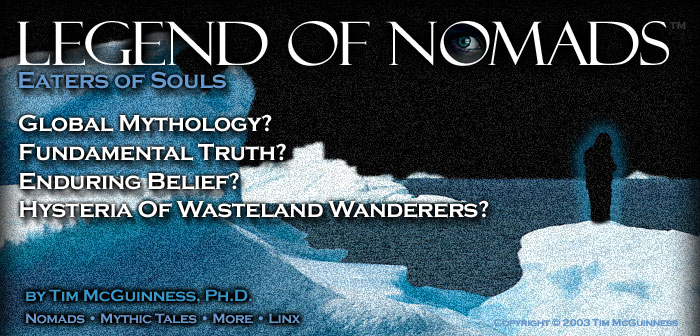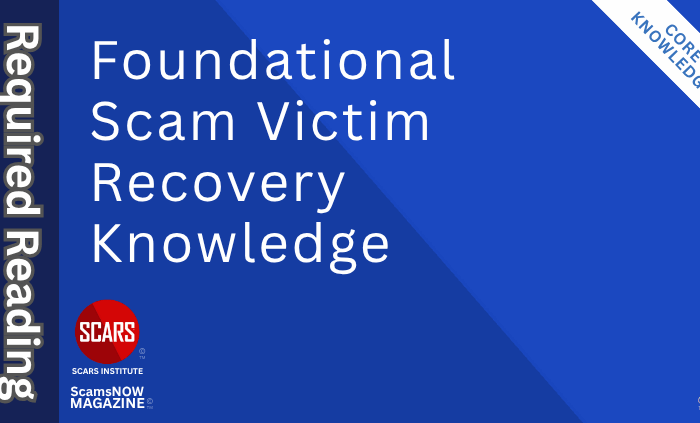
Waiting to See if Someone is Real – Take a Pause First
Is What You See Real? Take a Pause to be Sure! A Lesson for Surviving Safely Online!
Primary Category: Scam Victim Recovery Philosophy
Author:
• Tim McGuinness, Ph.D., DFin, MCPO, MAnth – Anthropologist, Scientist, Polymath, Director of the Society of Citizens Against Relationship Scams Inc.
About This Article
Learning to pause before trusting is one of the most powerful skills you can build after surviving a scam. Scammers thrive on speed because they know quick reactions prevent you from asking the right questions. Recovery begins when you slow down. Pausing gives you time to see what is real and what is false. It helps you notice warning signs, recognize manipulative tactics, and understand your own emotional triggers. It also gives you space to rebuild trust in yourself, one careful decision at a time. The ancient habit of waiting before trusting a stranger is not outdated. It is more relevant now than ever, especially for scam victims navigating a world where deception can happen through a phone, a screen, or a simple text message. The pause protects you from rushing into another scam. It restores control to your hands. It reminds you that trust is earned slowly, not given quickly. In recovery, the pause is not just a safety tool; it is a survival skill.
Note: This article is intended for informational purposes and does not replace professional medical advice. If you are experiencing distress, please consult a qualified mental health professional.

Is What You See Real? Take a Pause to be Sure! A Lesson for Surviving Safely Online!
Author’s Note
The following article may feel unusual because it explores something most people no longer think about: the need to pause and confirm if something or someone is real before you engage. This is not just about social caution. It is about a forgotten survival instinct. Ancient people knew that reality could deceive them. They understood that not everything appearing at the edge of the village, at the door of the home, or in the empty places of the world was what it seemed to be. They paused first. They watched. They waited for signs before they trusted. Modern humans have mostly lost this habit.
Today, most people assume that what they see is real and probably trustworthy. Scam Survivors now know better. They know the pain of discovering that what seemed real was not. They know what happens when you mistake illusion for truth. Once, the world was filled with specters, tricksters, and things that wore human faces but were not human at all. Some people might believe those things are long gone. Maybe they are not. About thirty years ago, as an anthropologist, I studied this directly. I spent time researching the Nomads, the urban specters who drift through forgotten spaces, and the Shetani of East Africa, spirit beings from Swahili and Makonde traditions. The Shetani are another form of this same idea: entities that move in and out of human reality, sometimes evil, sometimes tricksters, always dangerous. A bit about the Nomads is included here. The Shetani will have to wait for another day.
The point of this is simple. Our ancestors knew to pause before they acted. They understood the need to be sure of what they were seeing. Scam victims often say, “I wish I had paused. I wish I had checked first.” That is why this lesson still matters. It always will.
The Ancient Practice of Testing Reality Before Trust
Ancient people understood something that modern life often makes you forget. Not everything you see is real. Your eyes might show you an image, but that does not mean the image tells you the truth. For thousands of years, humans lived in environments where caution was not just wise, it was necessary for survival.
When a stranger appeared, the first question was never, “Who are you?” The first question was always, “Are you real?” Only after answering that could they begin to ask, “Are you safe?”
In the ancient world, people believed that reality itself could be deceptive. Many cultures taught that spirits, tricksters, or supernatural beings might disguise themselves as humans. Some of these stories reflected actual fears of physical danger, like bandits or enemies in disguise. Other stories dealt with deeper, more existential concerns. People knew that the world could play tricks on the senses. They created rituals, pauses, and moments of reflection to separate truth from illusion. These practices were not just about tradition. They were survival strategies.
In early Japan, the Shinto tradition taught people to treat boundaries as sacred spaces. A “torii gate” stood at the entrance to villages and temples. When someone passed through that gate, it marked a shift between ordinary life and the spirit world. Visitors were watched carefully. People believed that spirits could take human form. Not every person who crossed the boundary was what they appeared to be. By pausing and observing, villagers gave themselves time to recognize if a visitor carried spiritual energy, dangerous intent, or peaceful purpose.
In Native American traditions, especially among the Lakota and other Plains tribes, the practice of the vision quest taught a similar lesson. When a person went into isolation to seek guidance, they knew that not every vision was true. Some images were real messages. Others were tests, distractions, or deceptions created by the mind under stress. Elders taught that wisdom comes from learning to tell the difference. This idea carried into everyday life. When a stranger approached, people paused to observe. They listened carefully before deciding whether to trust. They knew that the mind’s desire for connection or meaning could cloud judgment.
In early Celtic cultures, especially in Ireland and Scotland, there was a deep respect for the concept of “thin places.” These were locations where the boundary between worlds grew weak (you might look for a book called “Mythago Wood”). A traveler might step into a place where the physical and spiritual overlapped. Strangers who appeared near these boundaries were sometimes treated with suspicion, not because of rudeness, but because of caution. The Celts believed that the world could produce illusions. A visitor might be a normal person, but they might also be a spirit or a trickster. People learned to pause, to observe, and to wait for signs before engaging fully.
In Polynesian cultures, travelers who arrived by canoe were met with rituals before being welcomed into the village. Islanders watched from a distance as the newcomers approached. They looked for gestures of peace, signs of intent, and signals of safety. Only after careful observation did they invite strangers ashore. This was not only to prevent warfare or theft. It was also because the ocean was seen as a space of mystery. People believed that the sea could carry more than just human visitors. Spirits and omens traveled across the waves, too. Observation created a protective space for the community to decide what was real and what was not.
In medieval Europe, guards at castle gates followed similar patterns. Before opening the doors, they questioned travelers, checked their stories, and observed their behavior. They knew that letting someone past the gate created new risks. Once a person crossed into the safe space of a town or fortress, damage could be done from the inside. Waiting at the threshold gave guards the chance to notice signs of deceit, illness, or threat. This process was about defense, but it was also about wisdom. Appearances could be false. Identities could be faked. Observing first was a matter of survival.
These practices were not based on superstition alone. They were early forms of risk management. Ancient people understood the importance of creating a pause between encounter and trust. They knew that predators, whether human, animal, or spiritual, often rely on speed and surprise. By slowing down the moment of decision, they protected themselves from harm.
In today’s world, the risks are still present, even though the threats look different. Online interactions, social media, and digital strangers invite you to trust quickly. You meet people through screens, messages, and images without the natural pauses that physical meetings once required. The danger is not just from scammers or criminals. It also comes from your own mind. You can fall into magical thinking, projecting hope onto a person or situation without stopping to test if it is real.
Ancient people survived by building moments of observation into their daily lives. You can do the same. When you meet someone new, whether in person or online, you do not owe them immediate trust. You owe yourself a moment(s) to wait, watch, and let the truth reveal itself. Reality is not always obvious at first glance. Giving it time to show you what is real is not just smart. It is necessary.
The Norse Custom of Waiting to See if a Visitor Is Real
In Norse culture, hospitality was taken seriously. The harshness of the environment made it essential for communities to welcome travelers, but it also made people cautious. One ancient custom, described in several sagas and poems, involved pausing when a visitor arrived. The host and sometimes the entire household would wait quietly, observing the person at the threshold. They would stand still for a moment before offering food, drink, or conversation. This pause was not about rudeness or suspicion. It served a deeper symbolic purpose.
The Norse people believed the world was filled with both visible and invisible forces. Visitors could be strangers, friends, enemies, spirits, or omens. In some cases, people believed that ghosts or magical beings might take on human appearance to test or deceive them. By standing quietly and watching, they gave themselves a chance to see if the visitor was real, physical, and alive. Sometimes they looked for signs that the figure was a spirit or a projection. In other cases, the pause helped them read the visitor’s intentions before deciding how to respond.
This custom also had a psychological function. It created a moment of transition between the unknown and the familiar. By pausing, the host prepared emotionally and mentally for whatever news, trouble, or opportunity the visitor might bring. In the sagas, this moment often carried tension because the arrival of a traveler could change the course of a household’s fate.
Hospitality remained sacred, but awareness of the unknown was equally important. The pause reflected respect for both the living and the spirit world. It created space to notice subtle details, to reflect, and to decide how best to act. The Norse believed that careful observation was not just wise, it was necessary for survival.
The Nomads: Specters of the Empty Places
Throughout history, people have feared the moment when they encounter someone in an empty place. That fear does not come from ordinary caution. It comes from the knowledge that sometimes, what you meet is not real. Sometimes, the stranger is not a person at all. It is something older. Something outside of life. Something that wears the shape of a human but is not bound by the same rules.
In the 1986 film ‘Nomads’ starring Pierce Brosnan, based on the 1984 novel by Chelsea Quinn Yarbro, the danger of the stranger is taken to its most terrifying form. The story follows a French anthropologist who encounters a group of drifters in Los Angeles. On the surface, they look like ordinary people, urban wanderers, punks, street people. They move through the city without attachments or roots. At first glance, they seem like part of the landscape of modern life. But they are not.
These Nomads are something else entirely. They are not human, though they wear human faces. They are ancient specters. They travel through the empty places of the world, following no rules but their own. They appear in the spaces between order and chaos, slipping in and out of reality. When you meet one, you are not meeting a person. You are encountering a force that moves beyond life and death. In the story, the Nomads represent something that has haunted humanity since the beginning, the fear of the unknown traveler who is not what they seem.
Anthropologists have written extensively about them, though those publications are difficult to find.
The story of the Nomads captures this fear. They are not just wanderers. They are predators that exist between dimensions, moving through human spaces without belonging to them. They are feeding on the energy of human attention and fear. They are ancient and eternal. No one knows where they came from. They have always been here.
These Nomads do not build homes or settle anywhere. They do not leave footprints in the way ordinary people do. They are drawn to forgotten places, the spaces between the known and the unknown. Deserted streets at night, abandoned buildings, empty parking lots, these are the places where the Nomads linger. They gather where the human world loses its grip. They follow patterns of movement that are invisible to most people. They appear normal, even familiar, but they are not.
When you see one, the danger begins. The moment you notice them, you open a door that cannot easily be closed. The Nomads thrive on awareness. If you do not see them, they drift past you unnoticed. If you see them, if you respond, you become part of their game. Once you become aware of them, they become aware of you. They do not kill in the ordinary sense. They erase. They hollow out the person who has seen too much. They absorb your sense of reality, breaking the boundary between your world and theirs. Sound familiar?
The Nomads are drawn to travelers, wanderers, the lonely, and outsiders because they recognize something familiar in those lives. They prey on people who move from place to place without roots, just like they do. But they are not limited to any one kind of victim. Anyone who notices them and engages falls into their grasp. They can appear as street punks, bikers, gang members, or drifters. Their appearance changes to match the fears and expectations of the observer. In one culture, they might look like vagabonds. In another, they might appear as supernatural beings from local folklore. They shift forms, but their essence remains the same.
They are creatures of entropy, feeding on the spaces where order breaks down. They do not cause the collapse of societies or the decay of urban environments, but they follow where those things happen. They are drawn to the aftermath, to the emptiness left behind when life moves out and shadows move in. They thrive on the forgotten, the overlooked, and the abandoned.
The danger of the Nomads is not just that they are predators. The true danger is that they make you question what is real. They feed on perception. They blur the line between the living and the dead, the material and the immaterial. Once you see them for what they are, you cannot unsee them. You start to notice them everywhere, in places where no one should be, at times when no one should appear. They do not break into your home. They break into your reality.
Ancient people feared encounters with beings that did not belong to the normal world. The Nomads are the modern form of that fear. They represent the specter of the stranger who is not really there. They remind you that in the empty places of the world, you are never entirely safe.
When you meet someone in those places, you first have to ask, Are they real? And if they are real, you must then ask, Are they safe?
Of course, Nomads are not real, but the answer to both questions above is usually no. This is but one example of the reason for being cautious above all else.
The Importance of Pausing Before You Trust Anyone, Especially Online
In modern life, the world moves fast. Messages come in instantly. People meet online, form friendships, start relationships, and share personal information before they have even heard the other person’s voice. Social media, dating apps, and messaging platforms have removed the natural pause that once existed in human interaction. The Norse custom of waiting quietly when a visitor arrived serves as a reminder that you still need this pause, especially now. When you meet someone new, online or in person, you benefit from giving space and time for the truth to reveal itself.
When you meet a stranger online, you cannot know right away who they are or what they want. On the surface, they may seem friendly, caring, or exciting. They may say all the right things and make you feel seen or special. You may like their photos. That does not mean they are real in the way you imagine. Far too many online strangers are not who they claim to be. Some may be projecting an idealized version of themselves. Some may be lying to manipulate you. Others may not be people at all, but bots or scams designed to exploit your emotions and take your money.
When you pause before trusting, you give yourself the chance to watch for signs of reality or deception. You allow the stranger to reveal themselves over time. In this pause, you listen carefully to what they say, but you also watch for contradictions, strange gaps, or patterns that feel unnatural. You ask questions, not just to gather facts but to observe how the person responds when you do not give immediate trust. This is not about being rude or suspicious without cause. It is about practicing wisdom and protecting yourself from harm.
The internet blurs the line between real connection and fantasy. Sometimes you may fall into magical thinking without realizing it. You might project your hopes onto the stranger. You might believe this person is exactly what you needed, simply because you want them to be. When this happens, your mind ignores warning signs. You start filling in the gaps in the stranger’s story with your own imagination. You stop noticing the things that do not add up. Pausing helps prevent this. It gives you time to let the truth rise to the surface instead of forcing a fantasy to become real in your mind.
In some cases, what you encounter online is not just fantasy. It is evil deception. Scammers, predators, and manipulators create fake identities to control you, take from you, or lead you into emotional harm. They know how to exploit the fast pace of online connections. They rush you into trust before you have time to think. They mirror your values, pretend to share your experiences, and flatter you into lowering your guard. Pausing interrupts this process. When you take time before trusting, you change the pattern. You stop the scammer from controlling the speed of the relationship. You give yourself the chance to observe, verify, and reflect.
Even when the person you meet is not a scammer, you still benefit from letting time reveal their character. People are complex. They do not always show you who they are in the first few conversations. Sometimes they are presenting a polished version of themselves because they want to be liked. Sometimes they are hiding their flaws because they fear rejection. When you pause and let the relationship unfold slowly, you give them the chance to show you more of who they really are. You see how they respond to frustration, disagreement, or inconvenience. You watch how they treat others, not just how they treat you when everything is easy. This helps you decide if the connection is safe, honest, and worth continuing.
Pausing also protects you from yourself. Emotional neediness, loneliness, or excitement can cloud your judgment. When you want a connection badly, you may rush into trust just to relieve that need. Taking time allows you to check in with your own feelings and question whether you are acting out of hope or wisdom. It reminds you to balance openness with caution.
Online life has removed many natural social cues. You cannot see body language or hear tone of voice in a text message. You cannot verify a stranger’s story by looking into their eyes or meeting their friends. Because of this, you must create your own moments of pause. You must build space into your decision-making, just like the Norse people did when they stood quietly at the door.
Let the stranger make themselves known to you. Do not fill in the gaps with fantasy. Do not rush to trust because you are tired of waiting for a connection. When you pause, you give yourself time to notice what is real and protect yourself from what is false. You let the truth unfold naturally, without forcing it into a shape that matches your hopes. In a world full of instant connections and digital strangers, this practice is not just wise. It is essential for emotional safety.
Why the Pause Matters Especially for Scam Victims
If you have been the victim of a scam, you already know how easy it is to fall into the trap of fast trust. Scammers do not give you time to think. They do not want you to pause. They push you to act quickly, to respond emotionally, and to believe without proof. They create urgency. They use charm, fear, romance, or greed to pull you into their narrative before you have time to ask the most important question: “Is this real?”
When you are recovering from a scam, the idea of the pause becomes even more important. You cannot afford to trust the next person too fast. You cannot afford to rush into the next connection, conversation, or opportunity without building in time to observe. Trauma often creates a desperate need for relief. You might look for someone new to trust, just to silence the anxiety and guilt left behind (called rebounding). You might feel pressure to believe the next person is different. You might convince yourself you are fine now, that you will “know better next time” without realizing you are setting yourself up for another fall.
Scammers understand this. Many of them target victims again during recovery. They know you are vulnerable. They know you are searching for comfort, closure, or justice. Some will pretend to help you recover. Others will offer fake services, fake law enforcement contacts, or fake financial restitution. They know how to mirror your hopes back to you. They do not need to trick you with complex technology. All they need to do is catch you before you pause.
Building a habit of pausing protects you from these secondary scams. It gives you time to feel your emotional state before you act. When you pause, you can ask yourself the hard questions: “Am I reacting from fear? Am I chasing relief? Am I letting my hope lead me into another trap?” You can step back from the urgency and remember that real relationships and real recovery do not happen overnight. They take time, effort, and patience.
The pause also helps you rebuild trust in yourself. After a scam, you might doubt your own instincts. You might feel ashamed or embarrassed. That shame can make you impulsive. You might try to prove you are smarter now by jumping into quick decisions. You might tell yourself you are in control because you are acting fast. In reality, control comes from slowing down. Control comes from thinking before reacting. The pause gives you that space.
When you meet new people during recovery, whether online or in person, you do not owe them instant trust. You owe yourself time to see if the connection is real and safe. You owe yourself the right to ask questions, wait for answers, and watch for consistency. Scammers push for speed. Recovery requires patience. If you want to break the cycle of re-victimization, you must build the habit of pausing before you trust anyone again.
The pause is not about shutting people out. It is about keeping yourself safe while you decide who belongs in your life. It is about creating a boundary between your healing process and the dangers that still exist in the world. When you pause, you reclaim control. You stop letting other people set the pace of your decisions. You give yourself permission to observe reality carefully, just like ancient people did when survival depended on knowing what was real and what was false.
For scam victims, this is not optional. It is necessary. Your safety, your recovery, and your future depend on it.
Conclusion: Why the Pause Will Always Matter
Throughout human history, survival has depended on one skill above all others: the ability to tell what is real from what is false. Ancient people built this into their daily lives. They paused at thresholds. They observed strangers. They tested reality before they trusted it. They knew that danger often arrives wearing a friendly face, and that not everything that appears human actually is. They learned this lesson through hard experience, and they passed it down in stories, customs, and warnings.
Today, the world moves faster, but the danger is the same. You meet strangers in digital spaces where the lines between real and false are blurred by design. Scammers, predators, manipulators, and deceivers use speed to their advantage. They know that if they keep you moving quickly, you will not stop to think. They push you toward instant trust, hoping you will skip the pause that protects you.
Your mind can also become your own enemy. Loneliness, fantasy, and wishful thinking can convince you to trust too soon. Magical thinking fills in the blanks when you do not have enough information. You believe what you want to believe. This is how deception works: outside forces create illusions, but it is your own mind that completes them.
The solution is simple but not always easy. You must bring the ancient habit of the pause into the modern world. You must slow down the moment between meeting and trusting. You must give reality time to reveal itself. Whether you are talking to someone online, standing at your door, or facing a stranger in an empty place, you owe it to yourself to wait. Watch. Listen. Let the other person show you who they are, not who you hope they are.
This is not about fear. It is about wisdom. It is about protecting your life, your mind, and your sense of reality. When you pause, you create a boundary between you and potential danger. You create space for the truth to surface. That space is where survival lives. That is where safety starts. And in the world you live in now, it may be the most important habit you can build.
-/ 30 /-
What do you think about this?
Please share your thoughts in a comment below!
2 Comments
Leave A Comment
TABLE OF CONTENTS
- Is What You See Real? Take a Pause to be Sure! A Lesson for Surviving Safely Online!
- Is What You See Real? Take a Pause to be Sure! A Lesson for Surviving Safely Online!
- The Ancient Practice of Testing Reality Before Trust
- The Norse Custom of Waiting to See if a Visitor Is Real
- The Nomads: Specters of the Empty Places
- The Importance of Pausing Before You Trust Anyone, Especially Online
- Why the Pause Matters Especially for Scam Victims
- Conclusion: Why the Pause Will Always Matter
CATEGORIES
![NavyLogo@4x-81[1] Waiting to See if Someone is Real - Take a Pause First - 2025](https://scamsnow.com/wp-content/uploads/2025/04/NavyLogo@4x-811.png)
ARTICLE META
Important Information for New Scam Victims
- Please visit www.ScamVictimsSupport.org – a SCARS Website for New Scam Victims & Sextortion Victims.
- SCARS Institute now offers its free, safe, and private Scam Survivor’s Support Community at www.SCARScommunity.org – this is not on a social media platform, it is our own safe & secure platform created by the SCARS Institute especially for scam victims & survivors.
- SCARS Institute now offers a free recovery learning program at www.SCARSeducation.org.
- Please visit www.ScamPsychology.org – to more fully understand the psychological concepts involved in scams and scam victim recovery.
If you are looking for local trauma counselors, please visit counseling.AgainstScams.org
If you need to speak with someone now, you can dial 988 or find phone numbers for crisis hotlines all around the world here: www.opencounseling.com/suicide-hotlines
Statement About Victim Blaming
Some of our articles discuss various aspects of victims. This is both about better understanding victims (the science of victimology) and their behaviors and psychology. This helps us to educate victims/survivors about why these crimes happened and not to blame themselves, better develop recovery programs, and help victims avoid scams in the future. At times, this may sound like blaming the victim, but it does not blame scam victims; we are simply explaining the hows and whys of the experience victims have.
These articles, about the Psychology of Scams or Victim Psychology – meaning that all humans have psychological or cognitive characteristics in common that can either be exploited or work against us – help us all to understand the unique challenges victims face before, during, and after scams, fraud, or cybercrimes. These sometimes talk about some of the vulnerabilities the scammers exploit. Victims rarely have control of them or are even aware of them, until something like a scam happens, and then they can learn how their mind works and how to overcome these mechanisms.
Articles like these help victims and others understand these processes and how to help prevent them from being exploited again or to help them recover more easily by understanding their post-scam behaviors. Learn more about the Psychology of Scams at www.ScamPsychology.org
SCARS INSTITUTE RESOURCES:
If You Have Been Victimized By A Scam Or Cybercrime
♦ If you are a victim of scams, go to www.ScamVictimsSupport.org for real knowledge and help
♦ SCARS Institute now offers its free, safe, and private Scam Survivor’s Support Community at www.SCARScommunity.org/register – this is not on a social media platform, it is our own safe & secure platform created by the SCARS Institute especially for scam victims & survivors.
♦ Enroll in SCARS Scam Survivor’s School now at www.SCARSeducation.org
♦ To report criminals, visit https://reporting.AgainstScams.org – we will NEVER give your data to money recovery companies like some do!
♦ Follow us and find our podcasts, webinars, and helpful videos on YouTube: https://www.youtube.com/@RomancescamsNowcom
♦ Learn about the Psychology of Scams at www.ScamPsychology.org
♦ Dig deeper into the reality of scams, fraud, and cybercrime at www.ScamsNOW.com and www.RomanceScamsNOW.com
♦ Scam Survivor’s Stories: www.ScamSurvivorStories.org
♦ For Scam Victim Advocates visit www.ScamVictimsAdvocates.org
♦ See more scammer photos on www.ScammerPhotos.com
You can also find the SCARS Institute’s knowledge and information on Facebook, Instagram, X, LinkedIn, and TruthSocial
Psychology Disclaimer:
All articles about psychology and the human brain on this website are for information & education only
The information provided in this and other SCARS articles are intended for educational and self-help purposes only and should not be construed as a substitute for professional therapy or counseling.
Note about Mindfulness: Mindfulness practices have the potential to create psychological distress for some individuals. Please consult a mental health professional or experienced meditation instructor for guidance should you encounter difficulties.
While any self-help techniques outlined herein may be beneficial for scam victims seeking to recover from their experience and move towards recovery, it is important to consult with a qualified mental health professional before initiating any course of action. Each individual’s experience and needs are unique, and what works for one person may not be suitable for another.
Additionally, any approach may not be appropriate for individuals with certain pre-existing mental health conditions or trauma histories. It is advisable to seek guidance from a licensed therapist or counselor who can provide personalized support, guidance, and treatment tailored to your specific needs.
If you are experiencing significant distress or emotional difficulties related to a scam or other traumatic event, please consult your doctor or mental health provider for appropriate care and support.
Also read our SCARS Institute Statement about Professional Care for Scam Victims – click here
If you are in crisis, feeling desperate, or in despair, please call 988 or your local crisis hotline – international numbers here.
More ScamsNOW.com Articles
A Question of Trust
At the SCARS Institute, we invite you to do your own research on the topics we speak about and publish. Our team investigates the subject being discussed, especially when it comes to understanding the scam victims-survivors’ experience. You can do Google searches, but in many cases, you will have to wade through scientific papers and studies. However, remember that biases and perspectives matter and influence the outcome. Regardless, we encourage you to explore these topics as thoroughly as you can for your own awareness.



























![scars-institute[1] Waiting to See if Someone is Real - Take a Pause First - 2025](https://scamsnow.com/wp-content/uploads/2025/04/scars-institute1.png)
![niprc1.png1_-150×1501-1[1] Waiting to See if Someone is Real - Take a Pause First - 2025](https://scamsnow.com/wp-content/uploads/2025/04/niprc1.png1_-150x1501-11.webp)

The pause remains important…actually now the pause is critical. There is nothing, not a financial gain, an item, a meeting, more important than protecting oneself.
Very valuable information for all /including myself/ who still struggle with their own impulsive reactions.